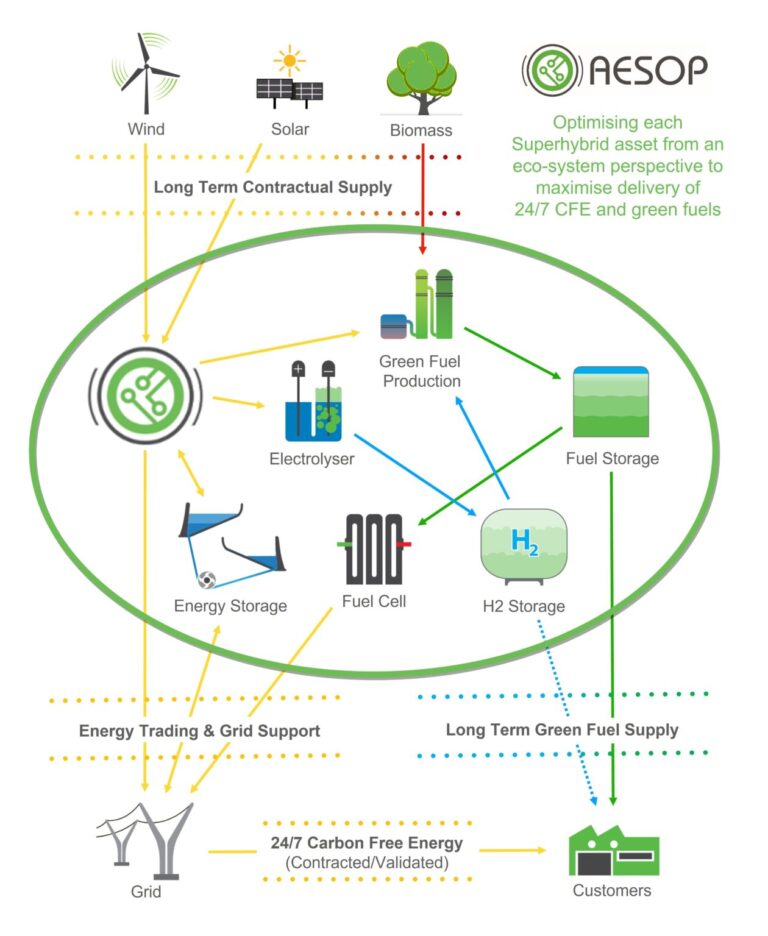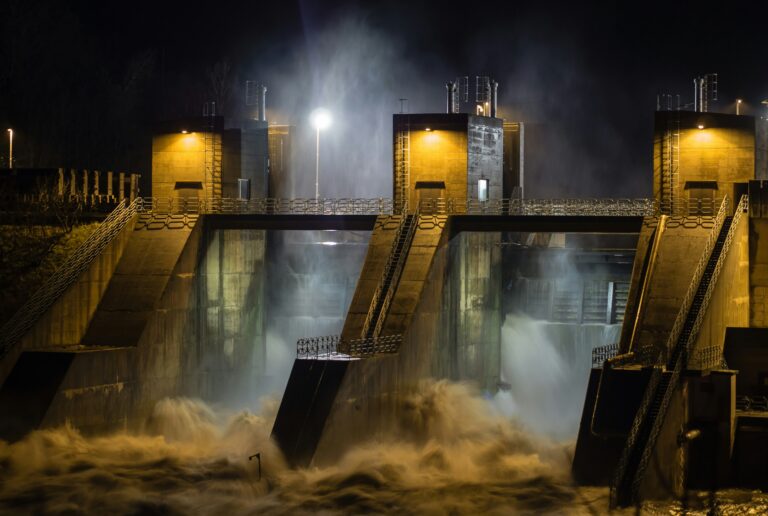By Chris Baker, Founder & Director Sunshine Hydro.

Google is taking action to properly account for the carbon used by its data centres around the world. This is how Google describes their goal.
“Electricity is the fuel that allows our data centres to deliver billions of Google searches, YouTube views, and much more—every single day, around the clock. In 2017 alone, we purchased more than seven billion kilowatt-hours of electricity (roughly as much as is used yearly by the state of Rhode Island) from solar and wind farms that were built specifically for Google. This enabled us to match 100% of our annual electricity consumption through direct purchases of renewable energy.
But, as exciting as this milestone was, it was only the first step toward a much more ambitious, long-term challenge: to source carbon-free energy to match our electricity consumption in all places, at all times. This means realizing a future where each Google facility is always matched—around the clock—with local carbon-free power.“
This is a critical goal for all companies to work towards. Without this, we cannot reach the goal of electricity grids being 100% renewable energy.
Very few companies have the resources to match Google’s buying power and capability to move towards this goal by carefully purchasing energy from various providers.
Sunshine Hydro’s projects are designed from the start to produce 100% renewable energy on a 24/7/365 basis. For example, a typical project such as Flavian in Australia will produce 220 MW of 100% green electricity 24 hours of every day. For companies that have a 24 hour flat demand, such as a data centre that needs to be online 24 hours a day and never miss a beat, it’s hard to be carbon neutral during the time when the sun is not shining or the wind is not blowing.
Whether it’s Google running data centres, a heavy industrial process such as making steel or aluminium, or for local council running street lighting, sewer treatment works and water pumping stations, or a cold storage facility and so on, many organisations have a requirement for power to be available 24/7.
Sunshine Hydro’s deep storage pumped hydro projects can store renewable energy when it’s plentiful and feed it back to the grid when renewable energy is scarce.
We can offer a power purchase agreement (PPA) that will provide renewable energy on a flat profile 24/7.
Some companies have a process that is continuous, and also a daily business cycle on top of this.
Many businesses operate during daylight hours which means they can use solar power to provide most of their electricity demands. Solar is often a good match for the electricity demand of a business. But what if that business operates post sunset or even 24/7?
How can Green Energy be Available 24/7?
For companies such as Google that run data centres and other 24/7 loads, how can they ensure that the energy that they buy matches their flat demand profile? Even for companies like Google it is not an easy task and it will take them many years to be able to buy dispatchable renewable energy. That is, renewable energy that can be “dispatched” when needed.
Hydro is an example of dispatchable renewable energy.
The trouble with large-scale hydro is that it requires the building of large dams on rivers with high flow. The building of large scale dams can be destructive to ecosystems and in most countries, it is socially unacceptable and the possibility of building such dams is limited.
Sunshine Hydro projects are off river closed loop pumped hydro that have a relatively small footprint and have only a small impact on the environment. Sunshine Hydro supports the International Hydro Association’s San Jose Convention on sustainable hydropower.
Traditional pumped hydro projects simply buy power from the grid when it is cheap, and then sell it back again later when prices are higher. The trouble with this approach is that it actually makes the carbon intensity worse on the energy that is delivered to the grid. This is not immediately obvious and it happens because of the round trip losses.
Here’s an example to better describe what I mean by this. The average carbon intensity of the Australian grid is around 650 kg per megawatt-hour of electrical energy. The losses of a traditional pumped hydro project are about 30% for the round trip of pumping up to the upper reservoir and then generating power when the water is returned to the lower reservoir.
For a project that uses 1000 MWh of energy to pump water on a particular day, these losses mean it can later deliver 700 MWh of energy back to the grid in the peak. The carbon associated with the 1000 MWh is 650,000 kg. That same 650,000 kg of carbon now belongs to the 700 MWh delivered to the network. The carbon intensity of that energy delivered is now 650,000 divided by 700 which is 929 kg per MWh. The carbon intensity has increased by about 50%
On the other hand, because Sunshine Hydro’s projects buy only renewable energy from wind and solar farms we have contracted with, there is zero carbon associated with the energy used for pumping, and therefore zero carbon associated with the energy that we deliver.
Sunshine Hydro only buys renewable energy to store water in the upper reservoir. It is zero carbon energy and remains zero carbon when it is returned to the grid.
The Problem with PPAs
A company wishing to become carbon neutral might consider buying a PPA with a wind farm. Such a PPA is contracted to buy all or some of the wind that the wind farm produces at a fixed price. When a company purchases the output from a wind farm, this does not provide electricity that the company can use directly, because the generation profile is not matched to the company demand profile.
For companies and organisations that have a flat demand profile, purchasing a green baseload PPA from Sunshine Hydro is a way to provide hour by hour carbon neutral electricity.
Sunshine Hydro projects take many years to develop and we are currently entering into memorandums of understanding with businesses that are seeking to be carbon neutral by 2030 and wish to start purchasing carbon neutral or green baseload power from around 2027 onwards.
Sunshine Hydro now offers a real alternative for companies that are genuine in wishing to be carbon neutral on an hour by hour basis. Companies wishing to enter into an MOU for green baseload power with Sunshine Hydro are invited to contact the CEO by writing to rick@sunshinehydro.com
Click here for link to Google article “the internet is 24/7 — carbon free energy should be too”.
Click here for link to IHA San José declaration on Sustainable Hydropower
Data centre image in this folder. Royalty free use. From Pixabay. File name electrical-g2aeed9b79_1920



